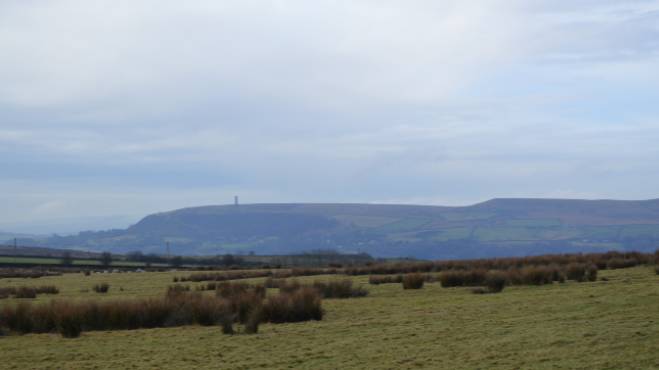Holcombe Moor and the Peel Tower
The project is part of a partnership with the National Trust, Natural England, the Environment Agency and the Holcombe Moor Commoners’ Association, with support from Defra
The high moorland is a precious environment where blanket bog has formed over 6,000 years
The project will reduce carbon emissions by protecting bare peat from erosion
Holcombe Moor and the Peel Tower
Holcombe Moor and the Peel Tower are part of the West Pennine Moors, much-loved by walkers from nearby Bury and Greater Manchester. The high moorland is a precious environment where blanket bog has formed over 6,000 years leading to the accumulation of peat up to three metres deep in places. In common with many other Pennine areas, the industrial revolution, and associated atmospheric pollution during the last 150 years, brought significant damage to the peat surface alongside other pressures including moorland fires, erosion and localised overgrazing.
This damage included drying out of the surface peat and changes to the vegetation making it less suitable for breeding moorland birds and increasing the likelihood of flooding downstream. It also means that the peat can no longer store carbon in the way that it should do, something which makes this type of environment such a valuable resource in our efforts to reduce the high levels of carbon in the atmosphere.
What are we doing?
Thanks to a new partnership with the National Trust, Natural England, the Environment Agency and the Holcombe Moor Commoners’ Association, and with support from Defra’s Moor Carbon fund, December 2019 sees the beginning of a programme of important work to improve Holcombe Moor peatland using several methods.
This project includes:
- Creating permeable dams by lifting stones into eroded gullies to restrict the flow of flood water. Initially, this work will be carried out in the Alden Ratchers area by transporting stones by helicopter from a quarry just 1km away
- Using excavation methods to create bunds and pools in select areas. This will also help in reducing the free flow of water across the moorland plateau
- Re-introducing sphagnum moss in newly rewetted areas. This will eventually make the top layers of the peat much more permeable and able to retain more water, rather than allowing it to flow over the surface as it does currently
The project can deliver biodiversity, carbon capture and natural flood management, linking an upland landscape to downstream beneficiaries in Rossendale and Greater Manchester. By restoring the living surface of blanket bog this project is expected to restore the capacity of Holcombe Moor to absorb carbon, supporting our efforts to adapt to climate change. It will improve blanket bog habitat helping the recovery of breeding moorland bird communities like golden plover and dunlin. By holding rain water on the moor for longer, it is hoped that the project will contribute to reducing flooding, something we have all seen can have a huge impact on communities at risk.

Working with the local community
For local people, Holcombe Moor is not only of great value as low intensity farmland but also as a place of recreation. We want the area to be accessible for those living in nearby urban areas, such as walkers and cyclists while managing areas where wildlife is sensitive to disturbance. To achieve this, we will continue to work closely with groups such as the Holcombe Moor Commoners’ Association, the Holcombe Society and Bury Local Access Forum.